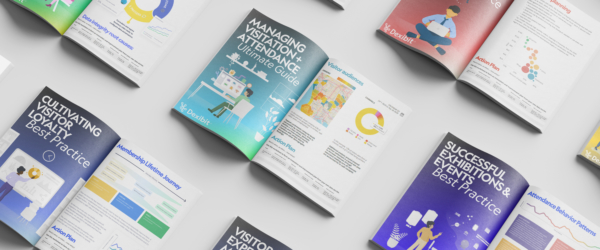The ammunition for blockbuster exhibitions
- In Exhibitions and Activities, Visitor Experience
- Articles
- 5 min read
In World War II, Britain’s Royal Air Force carried large conventional bombs with enough explosive power to destroy an entire street, with the press coining the term ‘blockbuster’ in their reporting. Post war, the entertainment sector repurposed the term to describe the box office phenomenon of a crowd stretching around the block for shows expected to earn significant sums (usually budgeted and marketed accordingly), a strategy adapted into museums in the 1970’s, beginning with Tutankhamun – which remains one of the most visited exhibitions of all time, even today.
It seems unusual then, that the museum sector would develop such a love hate relationship with a concept which ultimately refers to ‘explosive’ success, with some in the press going as far as to label blockbuster exhibitions bad, or even imply they are ruining museums – pointing to suspect anecdotal opinion that a visitor who sees a blockbuster exhibition is supposedly unlikely to be suitably impressed with anything else. It’s an unusual critique – certainly Hollywood has little objection to incorporating major headliners in its portfolio and few businesses would have such a negative view on their most successful offerings.
The argument against special exhibitions draws upon figures from limited studies taken out of context, trying to prove that success on one front somehow takes away from the museum’s mission, that this ‘showmanship’ degrades art, a distraction leading museums to neglect their collection or delivering unsustainable visitor numbers as museums search for what is colorfully described as the ‘drug of ever increasing highs’.
The basis of these fears harks to the temporary nature of the special exhibition, that most of its benefit to visitorship and revenue occurs during its term, with repeat visitation or membership renewal following not a core concentration. That may be true in some institutions, however only analysis of the museum’s own data can reveal actual performance as opposed to surveyed opinion – given what visitors say they want versus what they actually do, are often miles apart. These behaviors are likely influenced by the institution’s unique circumstance, such as tourism mix, alternate programming, admission pricing, membership perks and more.

Accounting for these, determining whether the blockbuster strategy is sustainable for a particular institution is more a matter for financial analysis than press commentary. True blockbusters can deliver important earned revenue from ticketing, merchandising and even touring, to financially support the museum mission and additional programs. In times where funding is under intense pressure, there is no sin in such – a constraint easily forgotten by those who would have the industry do without.
The real trouble at the heart of any issues associated with blockbuster exhibitions is complex. First, the museum must understand and plan for market behaviors surrounding exhibitions, such as an expected ‘table and chairs’ effect, where likely subscription churn in the year following an exceptional blockbuster will result in a membership drop from recent gains. Anticipating and repeatedly reminding stakeholders of the intricacies of these trends requires a data informed management culture.
The second is forecasting. Where special exhibitions get into hot water is often where admissions fail to reach anticipated levels, leading to bottom line blowouts due to ‘bombing’ sales figures, making them unreliable revenues. Using special exhibitions to hit targets, even with growing expectation, is not a problem – but overestimating attendance figures is (or conversely, the lost opportunity in underestimating). Using technology such as machine learning to produce more accurate, granular exhibition simulations, then monitoring residuals in an agile fashion, resolves this.
Finally, the museum requires focus on enhancing visitor behavior metrics converting from special exhibitions to get the best out of merchandising rates, membership conversion and renewal, plus wayfinding and repeat visitation into permanent collection galleries. Improving the art of this funnel through aspects such as offers, promotion and service will ultimately draw longer lasting financial and social benefit alike from an otherwise temporary high. This is the role of big data analytics across visitor experience and venue performance – to inform continuous improvement.
Want to learn more about Dexibit?
Talk to one of our expert team about your vision to discover your data strategy and see Dexibit in action.







